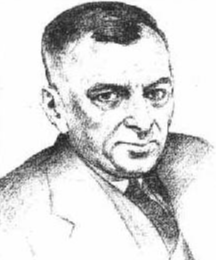Oracle bone inscriptions were written in the Shang Dynasty, which recorded the religious, cultural, military and other information of this ancient dynasty. The study of the inscriptions on bones is one of the popular studies on Chinese culture. However, more than 100 years ago, a missionary carried out studies on oracle bone inscriptions, becoming the first Western scholar of oracle bone inscriptions.
He is Yishi Ming, with the English name "James Mellon Menzies". Menzies was a missionary to China from the Presbyterian Church of Canada. He had been in Anyang, Henan Province, for many years, promoting the spreading of the gospel among the locals.
Menzies was born in the town of Clinton, Ontario, Canada, on February 23, 1885. His family were Presbyterian Scottish farmers, and they earned their living by farming. At the age of 22, he graduated from the University of Toronto with a degree in civil engineering and went to the Knox Theological Seminary for further studies.
In 1910, he was sent to China by the Presbyterian Church of Canada and served in the "Yubei Mission Board of the Presbyterian Church of Canada" in northern Henan Province (Yubei, also called "North Henan", refers to the areas that are north of the Yellow River in Henan Province, including Anyang, Xinxiang, Jiaozuo, Puyang, Hebi and Jiyuan). After coming to Henan Province, Menzies was attracted by the rich traditional Chinese culture there. With the purpose of "integrating Christianity into Chinese culture", he began to read a lot of sinology classics. A few years later, he became an erudite sinologist.
In 1914, Mr. and Mrs. Menzies were sent to Anyang, the former capital of the Shang Dynasty, to preach the gospel. Several people there became Christians. Besides his service in the gospel, he also paid a visit to the ruins of the Yin Dynasty due to his passion for Chinese culture. Being the first researcher from the West to attempt this, Menzies started his study even a year before Zhenyu Luo, a famous scholar of oracle bone inscriptions. Since then, he did an intensive study on the collection and research of oracle bone inscriptions, bronzes and other cultural relics of the Shang Dynasty during his more than 10 years in Anyang, and had remarkable achievements.
In 1917, Menzies selected 2,369 oracle bones from his collection of 50,000 and copied the inscriptions with his own hands. And then his first book, Oracle Bone Inscriptions of Yin Ruins, was published in Shanghai.
Ten years later, with the help of Chinese scholars, he compiled several stone rubbings of important oracle-bone inscriptions from his collection into the book Post-edition of Oracle Bone Inscriptions of Yin Ruins.
In 1932, Menzies was recruited to teach in the Department of Archaeology and Sinology of Qilu University. During his time at school, he built a museum of antiquities based on the cultural relics he collected from Anyang, introducing students to China's long history and culture. He taught students courses such as Research on Oracle Bone Inscriptions and General Theory of Archaeology, and passed on scientific knowledge of archaeology to young Chinese students.
In addition, he also wrote academic works such as Concept of God in Early China, Culture of the Shang Dynasty, Art of Shang and Zhou Dynasties, and Spread of Christianity in China in Marco Polo's Time.
On June 20, 1936 (some other records instead mention 1937), he left Qilu University and returned to Toronto, Canada. In 1942, he received a doctorate of philosophy from the University of Toronto. He continued to study Chinese culture and maintained close contact with Chinese academia. On March 16, 1957, he died at the age of 72.
- Translated by Sophia Chen












